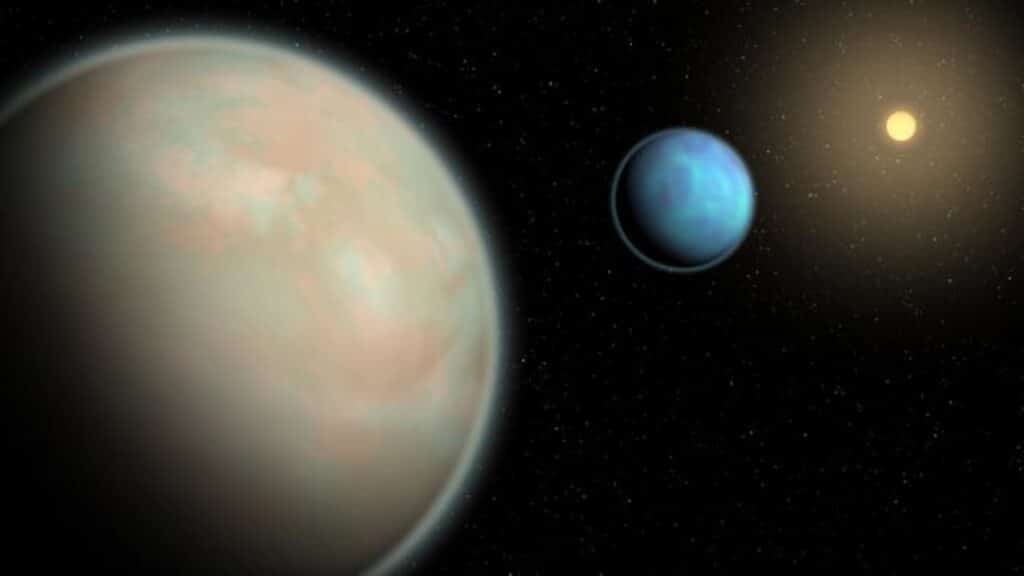Scientists are cooking up alien haze in a lab, simulating the conditions that lead to hazy skies on water-rich exoplanets. This significant breakthrough marks a crucial step in understanding how atmospheric haze can complicate observations made by ground and space telescopes.
Johns Hopkins University researchers are now offering new tools for investigating the atmospheric chemistry of exoplanets, providing insights into how these water-based planets form and evolve. These findings could prove invaluable in the ongoing quest to identify signs of life beyond our solar system.
“The big picture is whether there is life outside the solar system, but trying to answer that kind of question requires really detailed modeling of all different types, specifically in planets with lots of water,” says study co-author Sarah Hörst, a Johns Hopkins associate professor of Earth and planetary sciences, in a media release. “This has been a huge challenge because we just don’t have the lab work to do that, so we are trying to use these new lab techniques to get more out of the data that we’re taking in with all these big fancy telescopes.”
The Impact of Atmospheric Haze on Alien Worlds
The presence of haze or other particles in a planet’s atmosphere has a significant impact on various factors, including global temperatures, levels of incoming starlight, and conditions that can either hinder or promote biological activity.
The experiments conducted by the research team took place in a specially designed chamber within Hörst’s lab. These experiments are the first to determine the extent to which haze can form in water planets located beyond our solar system.
Haze is comprised of solid particles suspended in gas, and it alters how light interacts with that gas. Different types and levels of haze can influence the behavior of particles within an atmosphere, affecting what astronomers can observe about distant planets through telescopes.
The Complicated Role of Haze in Observations
“Water is the first thing we look for when we’re trying to see if a planet is habitable, and there are already exciting observations of water in exoplanet atmospheres. But our experiments and modeling suggest these planets most likely also contain haze,” says Chao He, a planetary scientist who led the research at Johns Hopkins. “This haze really complicates our observations, as it clouds our view of an exoplanet’s atmospheric chemistry and molecular features.”
Scientists study exoplanets using telescopes that analyze how light passes through their atmospheres. This allows them to detect how atmospheric gases absorb different wavelengths of light. However, distorted observations can lead to inaccuracies in determining the composition of the atmosphere, the presence of substances like water and methane, and the types of particles in the atmosphere.
Laboratory Experiments to Improve Understanding
To tackle these challenges, scientists created two gas mixtures containing water vapor and other compounds commonly found in exoplanets. They exposed these mixtures to ultraviolet light to mimic the effect of starlight on the chemical reactions that generate haze particles. By measuring how much light these particles absorbed and reflected, the researchers gained insights into how they interacted with light within the atmosphere.
This new data provided a more accurate match to the chemical signatures of a well-studied exoplanet called GJ 1214 b compared to previous research. It highlighted how different optical properties of haze can lead to misinterpretations of a planet’s atmosphere.
Diverse Alien Atmospheres and Future Research
Alien atmospheres can differ significantly from those in our solar system, with more than 5,000 confirmed exoplanets featuring varying atmospheric chemistries. Johns Hopkins researchers are now focused on creating laboratory-made haze “analogs” with gas mixtures that closely resemble what astronomers observe through telescopes.
“People will be able to use that data when they model those atmospheres to try to understand things like what the temperature is like in the atmosphere and the surface of that planet, whether there are clouds, how high they are and what they are made of, or how fast the winds go,” notes Hörst. “All those kinds of things can help us really focus our attention on specific planets and make our experiments unique instead of just running generalized tests when trying to understand the big picture.”
The study is published in the journal Nature Astronomy.












